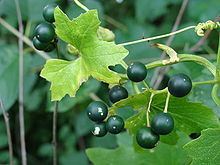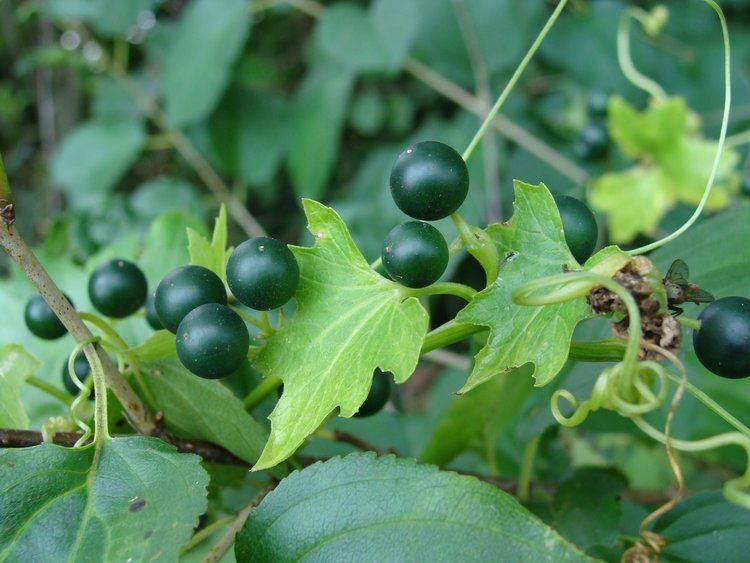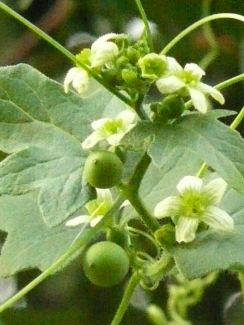Genus Bryonia Rank Species | ||
 | ||
Similar Bryonia, Bryonia dioica, Aconitum napellus, Carapichea ipecacuanha, Lycopodium clavatum | ||
Lecture on bryonia alba by homoeopathic dr muhammad naseer alvi
Bryonia alba (white bryony, wild hop) is a vigorous vine in the family Cucurbitaceae (squashes and melons) from Europe and Northern Iran. It has a growth habit similar to kudzu, which gives it a highly destructive potential outside its native range as a noxious weed. Other common names include false mandrake, English mandrake, wild vine, and wild hops, wild nep, tamus, ladies' seal, and tetterbury.
Contents
- Lecture on bryonia alba by homoeopathic dr muhammad naseer alvi
- Bryonia alba homeopathic medicine tips for beginners
- Description
- Distribution
- Ecology
- Toxicity
- Invasive species
- References

Bryonia alba homeopathic medicine tips for beginners
Description

An herbaceous, perennial vine of the cucumber family, white bryony is monoecious but diclinous (separate male and female flowers found on the same plant) with a tuberous yellow root. Greenish-white flowers are 1 cm (0.39 in) across. Long curling tendrils, flowers, and fruit all stem from axils of palmately lobed leaves. The fruit is a 1.5 cm (0.59 in) berry which blackens as it ripens.
Distribution

White bryony is native to Europe and Northern Iran. It has also been introduced to the United States, where it is listed as a noxious weed in Washington, Idaho, and Montana.
Ecology

Birds are the most common dispersal mechanism for this plant. They deposit seeds where they eat and nest, and so bryony is prevalent in native hawthorn patches and in windbreak, shelterbelt, riparian buffer, and wildlife plantings. Bryonia alba leaves may be used as a food plant by the larvae of cabbage moths.
Toxicity

All parts of Bryonia alba contain bryonin which is poisonous and may cause illness or death. Livestock may also be poisoned by consuming the fruit and leaves. Forty berries constitutes a lethal dose for adult humans.
Invasive species

Outside of its native range, this vine is often a very aggressive invasive weed. It can produce three vines at a time, which each grow up to 15 cm (5.9 in) per day. It has a climbing growth pattern similar to kudzu, and will grow into a dense mat when it cannot climb. Once established, it will climb other plants and trees as well as fences and buildings, blocking the sun and even rain from its host. Winter snow or heavy rains weighing down the mat of foliage create extra weight, leading to breakage of host limbs or even felling of entire host trees.
Control of white bryony usually involves manual pulling and very frequent removal of new growth; diligence being the key to success. Plants may be killed manually by severing the roots 7–10 cm (2.8–3.9 in) below ground surface to remove the crown and prevent re-sprouting. Tillage is often ineffective and can harm host plant roots, but broadleaf herbicides such as glyphosate can be useful when care is taken not to spray host plant leaves. Multiple applications are necessary to eventually move herbicide to the root and block production of new shoots. The dispersed seeds are viable for many years, so manually removing B. alba before seed production is important.
